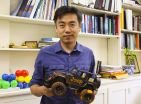"Everyone would like to hear the words, 'How can we help you today?' when reaching out for health care assistance," said Gary Kaplan, chair of the study committee that wrote the report, and chairman and chief executive officer of Virginia Mason Health System in Washington state. "Health care that embraces this philosophy is patient- and family-centered and implements the knowledge of systems strategies for matching supply and demand. Care with this commitment is feasible and found in practice today, but it is not common. Our report lays out a road map to improve that."
Delays in access to health care have negative effects on health outcomes, patient satisfaction, health care utilization, and organizational reputation, the committee found. Reducing wait times for mental health services is particularly critical, because the longer a patient waits for such services, the greater the likelihood that the patient will miss the appointment. Extended wait times are also associated with higher rates of appointment no-shows, as feelings of dissatisfaction and inconvenience discourage patients from attending a first appointment or returning for follow-up care.
Causes for delays include mismatched supply and demand, the current provider-focused approach to scheduling, outmoded workforce and care supply models, priority-based queues, care complexity, reimbursement complexity, and financial and geographic barriers. Contrary to the notion that same-day service is not achievable in most sites, same-day options have been successfully employed through a variety of strategies.
To improve access to health care, continuous assessment, monitoring, and realigning of supply and demand are required, the committee said. In addition, alternatives to in-office physician visits, including the use of non-physician clinicians and telephone consultants, can often meet patients' needs.
"There is a need for leadership at both the national level and at each health care facility for progress to be made in improving health care access, scheduling, and wait times," said Victor Dzau, president of the Institute of Medicine. "Although a lack of available scientific evidence hinders establishing specific standards for scheduling and wait times, systems strategies and case studies can help guide successful practices until more research is completed."
The committee issued several recommendations to help accelerate progress toward wider spread practice of immediate responsiveness. Noting that different clinical circumstances and patient preferences will compel different approaches, it recommended that certain basic access principles should apply across all settings. These principles include ongoing evaluation; immediate engagement of patient concerns at the time of inquiry; patient preference on timing and nature of care invited at the time of inquiry; need-tailored care with reliable, acceptable alternatives to office visits; surge contingencies in place to ensure timely accommodation of needs; and continuous assessment of changing circumstances in each care setting.
The committee further recommended that national leaders help spread and implement these basic access principles; instigate coordinated federal initiatives across multiple departments; broadly promote systems strategies in health care; and propose, test, and apply standards development. Also, professional societies should help lead in the application of systems approaches, and public and private payers should provide financial and other tools. In addition, the committee recommends that health care facility leaders anchor front-line scheduling practices in the basic access principles, demonstrate commitment to implementing these principles, involve patients and families in decisions regarding assessment and reform of access to care, and continuously assess and adjust at every care site.
INFORMATION:
The study was sponsored by the U.S. Department of Veteran Affairs. Established in 1970 under the charter of the National Academy of Sciences, the Institute of Medicine provides independent, objective, evidence-based advice to policymakers, health professionals, the private sector, and the public. The National Academy of Sciences, National Academy of Engineering, Institute of Medicine, and National Research Council make up the National Academies. A committee roster follows.
Contacts:
Jennifer Walsh, Senior Media Relations Officer
Chelsea Dickson, Media Relations Associate
Office of News and Public Information
202-334-2138; e-mail news@nas.edu
http://national-academies.com/newsroom
Twitter: @NAS_news and @NASciences
Pre-publication copies of Transforming Health Care Scheduling and Access: Getting to Now are available from the National Academies Press on the Internet at http://www.nap.edu or by calling 202-334-3313 or 1-800-624-6242. Reporters may obtain a copy from the Office of News and Public Information (contacts listed above).
INSTITUTE OF MEDICINE
Roundtable on Value and Science-Driven Health Care
Committee on Optimizing Scheduling in Health Care
Gary S. Kaplan, M.D. (chair)
Chairman and Chief Executive Officer
Virginia Mason Health System
Seattle
Jana Bazzoli, M.B.A. M.S.A.
Vice President, Clinical Affairs
Cincinnati Children's Hospital Medical Center
Cincinnati
James C. Benneyan, Ph.D.
Director
Healthcare Systems Engineering Institute
Northeastern University
Boston
James B. Conway, M.S.
Adjunct Faculty
Department of Health Policy and Management
Harvard School of Public Health
Woburn, Mass.
Susan Dentzer, B.A.
Senior Policy Adviser
Robert Wood Johnson Foundation
Princeton, N.J.
Eva K. Lee, Ph.D.
Professor and Director
Center for Operations Research in Medicine and Health Care
School of Industrial and Systems Engineering
Georgia Institute of Technology
Atlanta
Eugene Litvak, Ph.D.
President and Chief Executive Officer
Institute for Healthcare Optimization
Newton, Mass.
Mark Murray, M.D., M.P.A.
Principal
Mark Murray and Associates LLC
Sacramento, Calif.
Thomas Nolan, Ph.D.
Senior Fellow
Institute for Healthcare Improvement
Silver Spring, Md.
Peter J. Pronovost, Ph.D., M.D.
Senior Vice President for Patient Safety and Quality, and
Director
Armstrong Institute for Patient Safety and Quality
Johns Hopkins Medicine, and
Professor
Department of Anesthesiology/Critical Care Medicine and Surgery,
Department of Health Policy and Management
Schools of Medicine, Nursing, and Public Health
Johns Hopkins University
Baltimore
Ronald Wyatt, M.D., M.H.A.
Medical Director
Division of Healthcare Improvement
The Joint Commission
Oakbrook Terrace, Ill.
STAFF
Marianne Hamilton Lopez, Ph.D., M.P.A.
Study Director


